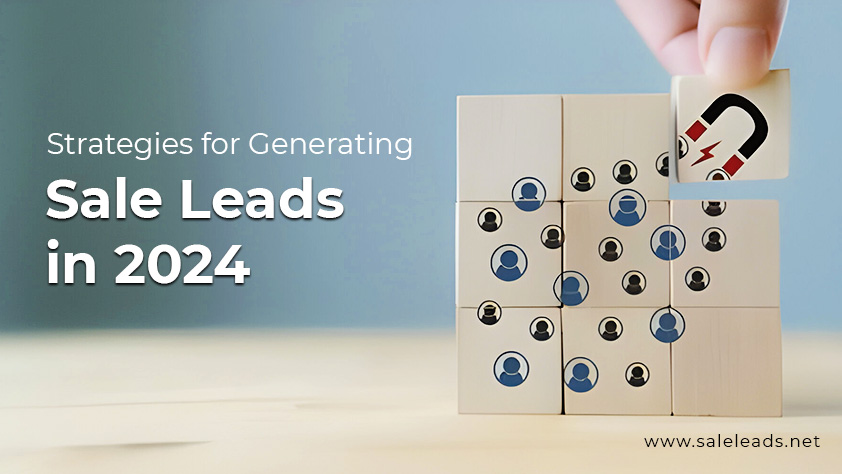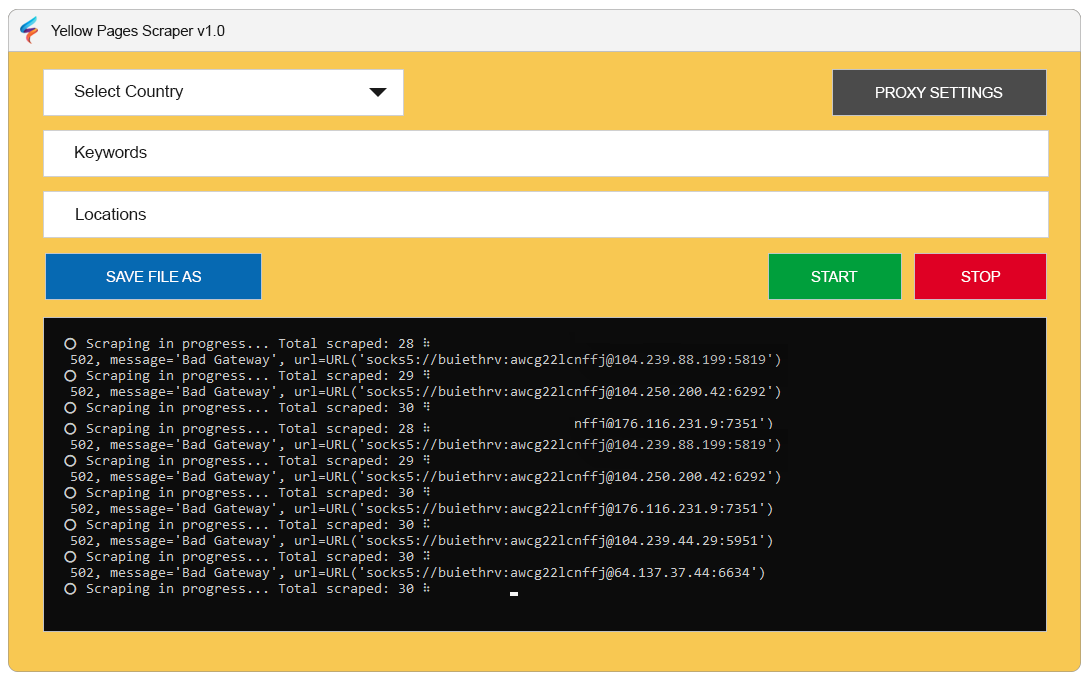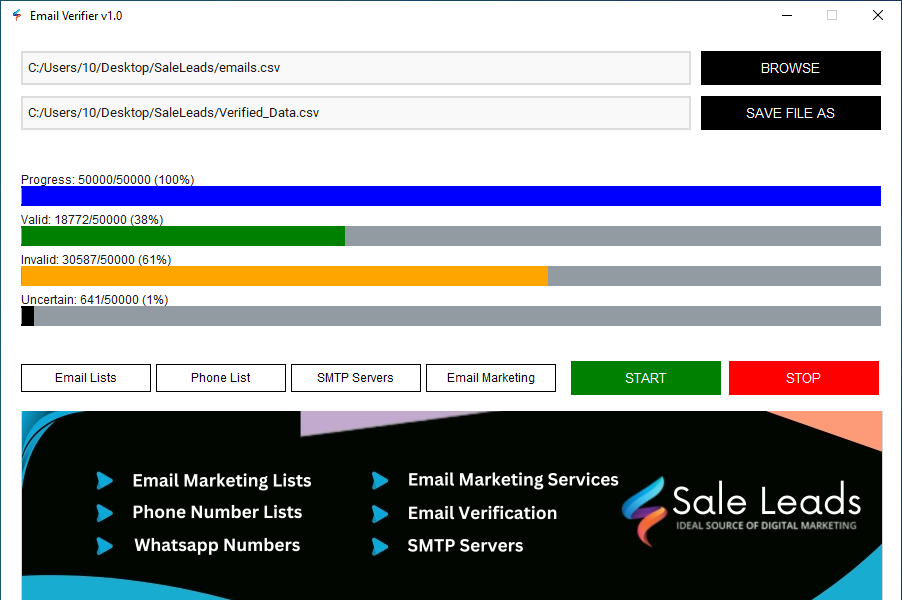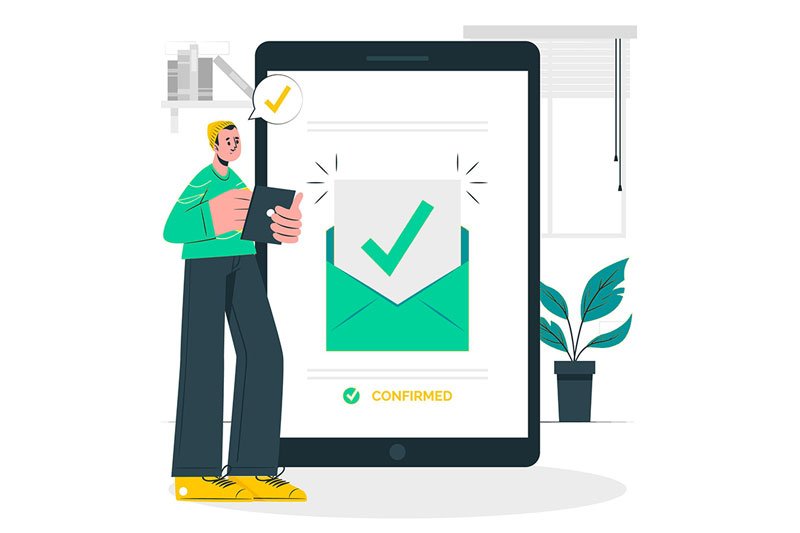- Email Lists
 United States (USA)
United States (USA)
Get quality leads from the United States International
International
Find leads from more than 150 countries Industries
Industries
Target your marketing campaigns by industry C-Level Executives
C-Level Executives
Directly target the decision makers Job Titles
Job Titles
Accountants, Manager, Super wiser & more - Phone Lists
Strategies for Generating Sales Leads in 2024 | Top 10 Proven Approaches

Sales leads are the lifeblood of any business. They are the potential customers who have shown interest in your products or services and are ready to take the next step in the buying process. Generating sales leads is not an easy task, especially in a competitive and dynamic market. You need to have clear Strategies for Generating Sales Leads in 2024 and an understanding of your target audience, their needs, preferences, and pain points, and offer them solutions that match their expectations and goals.
However, with the advancement of technology, new trends, and changing customer behavior, you also need to adapt your lead generation strategies accordingly. You need to leverage the power of digital tools, platforms, and channels to reach out to your prospects, engage them with valuable content, and nurture them until they are ready to buy.
Strategy #1: Use AI-Driven Personalization
Artificial intelligence (AI) is one of the most powerful technologies that can help you generate more qualified leads for your business. AI can analyze vast amounts of data from various sources, such as your website, social media, email, CRM, etc., and provide insights into your audience’s behavior, preferences, needs, and intent. You can use these insights to create personalized experiences for your prospects across different touchpoints and channels.
Personalization can help you attract more attention, increase engagement, build trust, and boost conversion rates. According to a study by Epsilon, 80% of consumers are more likely to purchase a brand that offers personalized experiences. Another study by Accenture found that 91% of consumers are more likely to shop with brands that recognize them and provide relevant ready-made email list offers and recommendations.
Some of the ways you can use AI-driven personalization for lead generation are:
- Create dynamic landing pages that change based on the visitor’s location, device, source, behavior, etc.
- Use chatbots or virtual assistants to provide instant answers, guidance, and support to your prospects.
- Segment your email list based on various criteria and send personalized messages with relevant content and offers.
- Use predictive analytics to identify the best time, channel, and message to reach out to your prospects.
- Use content recommendation engines to suggest the most relevant content to your prospects based on their interests and stage in the buyer’s journey.
Strategy #2: Leverage Influencer Marketing
Influencer marketing is another effective strategy for generating sales leads in 2024. Influencer marketing is the process of collaborating with influential people in your niche or industry who have a large and loyal following on social media or other platforms. These influencers can help you promote your brand, products, or services to their audience and generate awareness, trust, and credibility for your business.
Influencer marketing can help you reach out to a wider and more targeted audience that is interested in your niche or industry. According to a report by Influencer Marketing Hub, influencer marketing can deliver an average return on investment (ROI) of $5.78 for every $1 spent. Another report by Tomoson found that 51% of marketers believe that influencer marketing helps them acquire better-quality customers.
Some of the ways you can leverage influencer marketing for lead generation are:
- Identify the right influencers for your brand based on their relevance, reach, resonance, and reputation.
- Build a long-term relationship with them based on mutual trust and respect.
- Provide them with creative freedom and value proposition to create authentic and engaging content for your brand.
- Encourage them to include clear calls-to-action (CTAs) in their content to drive traffic to your website or landing page.
- Track and measure the performance of your influencer marketing campaigns using tools like Google Analytics, Influencer Marketing Hub, BuzzSumo, etc.
Strategy #3: Optimize Your Website for Conversion
Your website is one of the most important assets for generating sales leads for your business. It is the first impression that your prospects have of your brand, and it can either attract them or repel them. Therefore, you need to optimize your website for conversion and make sure that it is fast, responsive, user-friendly, and appealing.
Optimizing your website for conversion can help you reduce bounce rates, increase dwell time, improve SEO rankings, and generate more leads. According to a study by Unbounce, 79% of consumers say that a slow-loading website makes them less likely to buy from that company. Another study by Google found that 53% of mobile users abandon a site that takes longer than three seconds to load.
Some of the ways you can optimize your website for conversion are:
- Use a clear, catchy headline that communicates your value proposition and captures your attention.
- Use compelling and relevant images, videos, or graphics that showcase your products or services and evoke emotions.
- Use a simple and concise copy that highlights the benefits and features of your products or services and addresses the pain points of your prospects.
- Use clear and action-oriented CTAs that guide your prospects on what to do next, such as signing up for a free trial, downloading a lead magnet, requesting a demo, etc.
- Use testimonials, reviews, case studies, or social proof to build trust and credibility for your brand.
- Use pop-ups, exit-intent, or slide-in forms to capture leads before they leave your website.
Strategy #4: Create Valuable Content
Content is the king of lead generation. The way you communicate with your prospects, educate them about your products or services and persuade them to take action. It will also help you establish your authority, credibility, and thought leadership in your niche or industry.
Creating valuable content can help you attract more organic traffic, generate more leads, and nurture them until they are ready to buy. According to a report by Demand Gen Report, 47% of buyers view three to five pieces of content before engaging with a sales rep. Another report by HubSpot found that companies that publish 16 or more blog posts per month get 3.5 times more traffic than those that publish four or fewer posts per month.
Some of the ways you can create valuable content for lead generation are:
- Identify the topics and keywords that are relevant to your niche or industry and match the intent and needs of your prospects.
- Create different types of content for different stages of the buyer’s journey, such as blog posts, ebooks, white papers, webinars, podcasts, videos, infographics, etc.
- Use catchy headlines, subheadings, bullet points, images, videos, or graphics to make your content easy to read and scan.
- Provide useful information, insights, tips, or solutions that can help your prospects solve their problems or achieve their goals.
- Include clear and relevant CTAs in your content to drive your prospects to your website or landing page.
- Promote your content on various channels and platforms where your prospects are active, such as social media, email, forums, etc.
Strategy #5: Build an Email List
Email is one of the most effective and reliable channels for generating sales leads for your business. Enable you to communicate with your prospects on a one-to-one basis, build a relationship with them, and nurture them until they are ready to buy. Email also has a high ROI compared to other channels. According to a report by Campaign Monitor, email marketing can generate $44 for every $1 spent.
Building an email list can help you grow your audience, increase your brand awareness, and generate more leads. However, you need to have a permission-based email list that consists of people who have voluntarily opted-in to receive emails from you. You also need to provide them with valuable content and offers that can keep them engaged and interested in your brand.
Some of the ways you can build an email list for lead generation are:
- Create a lead magnet that offers something valuable and relevant to your prospects in exchange for their email address. A lead magnet can be an ebook, a checklist, a template, a webinar, a free trial, etc.
- Create a landing page that showcases your lead magnet and explains its benefits and features
Strategy #6: Use Social Media Marketing
Social media is one of the most popular and powerful platforms for generating sales leads for your business. These platforms allow you to reach out to a large and diverse audience, showcase your brand personality, and engage with your prospects in real time.
Using social media marketing for lead generation can help you increase your brand awareness, build trust and loyalty, and generate more leads. However, you need to have a clear and consistent social media strategy that aligns with your goals, audience, and industry. You also need to create and share valuable and relevant content that can attract and retain your prospects’ attention.
Some of the ways you can use social media marketing for lead generation are:
- Identify the best social media platforms for your business based on your niche, industry, and audience.
- Create a social media profile that reflects your brand identity, value proposition, and personality.
- Use hashtags, keywords, and tags to optimize your posts for better visibility and reach.
- Use images, videos, stories, reels, or live streams to create engaging and interactive content for your prospects.
- Use polls, quizzes, surveys, or contests to generate feedback, interest, and excitement for your brand.
- Use social media ads or sponsored posts to target your ideal prospects based on their demographics, interests, behavior, etc.
- Use social media analytics tools like [Hootsuite], [Sprout Social], [Buffer], etc., to track and measure the performance of your social media campaigns.
Strategy #7: Host Online Events
Online events are another great strategy for generating sales leads in 2024. Virtual events that allow you to connect with your prospects in a live and interactive way. Online events can help you showcase your expertise, demonstrate your products or services, and provide value to your prospects.
Hosting online events for lead generation can help you increase your brand awareness, generate more leads, and nurture them until they are ready to buy. However, you need to have a clear and compelling online event strategy that aligns with your goals, audience, and industry. You also need to create and deliver valuable and engaging content that can keep your prospects interested and involved.
Some of the ways you can host online events for lead generation are:
- Identify the best online event format for your business based on your niche, industry, and audience. Some of the online event formats are webinars, workshops, masterclasses, Q&A sessions, panel discussions, etc.
- Choose a reliable and user-friendly online event platform that can support your online event needs. Some of the online event platforms are [Zoom], [GoToWebinar], [Webex], etc.
- Create a landing page that showcases your online event and explains its benefits and features. Include a registration form that captures the email address and other relevant information of your prospects.
- Promote your online event on various channels and platforms where your prospects are active, such as email, social media, forums, etc.
- Prepare and rehearse your online event content and presentation. Use slides, images, videos, polls, quizzes, or chat features to make your online event more interactive and engaging.
- Follow up with your online event attendees with thank-you emails, feedback surveys, or offers. Nurture them with relevant content and offers until they are ready to buy.
Here are the other three strategies for generating sales leads in 2024:
Strategy #8: Use Video Marketing
Video marketing is one of the most engaging and effective strategies for generating sales leads in 2024. Leverage video marketing to craft and share compelling videos spotlighting your brand, products, or services for prospective customers. Harness the potential of video marketing to not only capture attention and boost retention but also enhance SEO rankings, ultimately driving increased lead generation.
Using video marketing for lead generation can help you increase your brand awareness, build trust and credibility, and generate more leads. However, you need to have a clear and creative video marketing strategy that aligns with your goals, audience, and industry. You also need to create and share valuable and relevant videos that can educate, entertain, or inspire your prospects.
Some of the ways you can use video marketing for lead generation are:
- Identify the best video format for your business based on your niche, industry, and audience. Some of the video formats are explainer videos, product demos, customer testimonials, case studies, how-to videos, etc.
- Choose a reliable and user-friendly video creation tool that can help you create professional and engaging videos. Some of the video creation tools are [Animoto], [Lumen5], [InVideo], etc.
- Create a video script that outlines your video content and message. Use a clear and catchy headline, a compelling and relevant story, and a strong and action-oriented CTA.
- Record and edit your video using high-quality equipment and software. Use images, graphics, music, voice-over, subtitles, or animations to enhance your video quality and appeal.
- Upload and optimize your video on various platforms and channels where your prospects are active, such as YouTube, Facebook, Instagram, LinkedIn, etc. Use keywords, tags, descriptions, thumbnails, or captions to improve your video SEO and visibility.
- Track and measure the performance of your video marketing campaigns using tools like Google Analytics, [YouTube Analytics], [Facebook Insights], etc.
Strategy #9: Use Content Syndication
Content syndication is another powerful strategy for generating sales leads in 2024. Republishing your existing content on third-party websites or platforms that have a larger and more relevant audience. Utilize content syndication to expand your content’s reach, enhance exposure, and establish authority in your industry.
Using content syndication for lead generation can help you increase your brand awareness, drive more traffic to your website or landing page, and generate more leads. However, you need to have a clear and strategic content syndication plan that aligns with your goals, audience, and industry. You also need to create and share high-quality and original content that can provide value to your prospects.
Some of the ways you can use content syndication for lead generation are:
- Identify the best content syndication platforms for your business based on your niche, industry, and audience. Some of the content syndication platforms are [Medium], [LinkedIn], [Quora], etc.
- Choose the best content pieces from your website or blog that are relevant, evergreen, and engaging. Make sure that they have clear and action-oriented CTAs that drive your prospects to your website or landing page.
- Republish your content on the chosen platforms with proper attribution and links to the source. Use keywords, tags, descriptions, images, or videos to optimize your content for better visibility and reach.
- Promote your syndicated content on various channels and platforms where your prospects are active. Such as email, social media, forums, etc.
- Track and measure the performance of your content syndication campaigns using tools like Google Analytics, [Medium Stats], [LinkedIn Analytics], etc.
Strategy #10: Use Referral Marketing
Referral marketing is one of the most trusted and cost-effective strategies for generating sales leads in 2024. The process of encouraging your existing customers, partners, or advocates to refer your brand, products, or services to their friends, family, or network. It can help you generate more word-of-mouth, loyalty, and leads.
Using referral marketing for lead generation can help you increase your brand awareness, build trust and credibility, and generate more leads. However, you need to have a clear and rewarding referral marketing program that motivates your referrers to spread the word about your brand. You also need to provide them with easy and convenient ways to share your brand with their contacts.
Some of the ways you can use referral marketing for lead generation are:
- Identify the best referrers for your brand based on their satisfaction, loyalty, and advocacy. Some of the referrers are your existing customers, partners, employees, influencers, etc.
- Create a referral marketing program that offers incentives and rewards to your referrers for each successful referral. The incentives and rewards can be cash, discounts, freebies, points, etc.
- Create a referral marketing platform or tool that allows your referrers to easily share your brand with their contacts. The platform or tool can be a landing page, a form, a widget, an app, etc.
- Promote your referral marketing program on various channels and platforms. Where your referrers are active, such as email, social media, website, etc.
- Track and measure the performance of your referral marketing program using tools like Google Analytics, [ReferralCandy], [InviteReferrals], etc.







